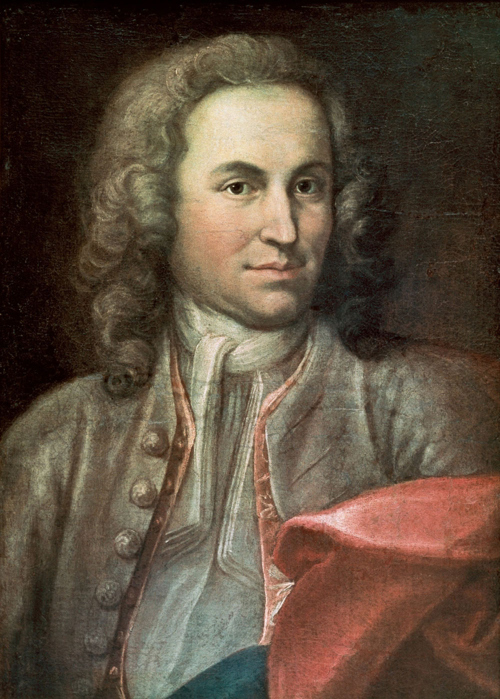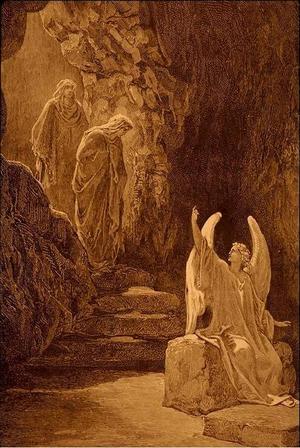J.S. Bach – Kantata ’Christ lag in Todesbanden’ BWV 4
(Kantatę można posłuchać tutaj: theblues-thatjazz.com/pl/box/4135-js-bach--kantata-bwv-4-christ-lag-in-todesbanden.html )
Trudno mi sobie wyobrazić wielkanocny czas bez Bacha. Prezentowałem już przy poprzednich świętach największe jego dzieła. Dziś kolej na kantatę.
Kantata BWV 4 od pierwszych słów tekstu nazywana ’Christ lag in Todesbanden’ jest jedną z najstarszych. Data powstania nie jest dokładnie znana. Pierwotnie podawano okres lipski, czyli dosyć późny, potem weimarski. Ostatnie badania jednak wyraźnie wskazują, że kantata ta powstała w roku 1707 lub 1708.
W 1707 roku Bach mieszkał i pracował w Mühlhausen, gdzie znalazł się z powodu konfliktu z radą miasta Arnstadt. Poszło o przedłużającą się podróż Bacha do Lubeki, dokąd wybrał się posłuchać gry na organach największego wówczas kompozytora i organisty Buxtehudego. Mühlhausen było małym miasteczkiem i Bach spędził tam niewiele ponad rok.
Jednak mieściły się w tym dwa Święta Wielkanocne z lat 1707-08. Jest to ważne ponieważ
Kantata BWV 4 została napisana właśnie na Wielkanoc.

Portret młodego Bacha, autor nieznany
Jaka była tamta partytura dokładnie nie wiadomo. Kantatę wykonano w Lipsku w 1724 i 1725 roku. Bach dokonał wtedy istotnych poprawek, co sprawiło, że uznano ją za dojrzałą i dlatego tak ją datowano.
Struktura utworu bazuje na hymnie Marcina Lutra. Poszczególne części kantaty, poza sinfonią, oparte są o kolejne zdania hymnu. Są one następujące:
· Sinfonia
· Verse I: "Christ lag in Todes Banden
· Verse II: "Den Tod niemand zwingen kunnt" ("Nobody could overcome death")
· Verse III: "Jesus Christus, Gottes Sohn" ("Jesus Christ, Son of God")
· Verse IV: "Es war ein wunderlicher Krieg" ("There was a wondrous war")
· Verse V: "Hier ist das rechte Osterlamm" ("Here is the true Easter Lamb
· Verse VI: "So feiern wir das hohe Fest" ("So we celebrate the high feast")
· Verse VII: "Wir essen und leben wohl" ("We eat and live well")
Kantata w całości napisana w tonacji e-moll na cztery głosy: sopran, alt, tenor i bas oraz na dwoje skrzypiec, dwie wiole i basso continuo.

Marcin Luter. Portret Łukasza Cranacha z 1533 roku.
Luter napisał swój tekst w 1524 roku do chorału, który wywodził się od Hymnu Gregoriańskiego „Pange lingua gloriosi". Echa tego chorału są wyraźnie słyszalne w Sinfonii.
Następne części tworzą układ symetryczny: chorał – duet – solo – chorał – solo - duet –chorał. Chorał z czwartej części jest centralnym punktem utworu.
Ta wibrująca kontrapunktem część jest „cudowną bitwą” między życiem a śmiercią, która w hymnie Lutra zostaje zwyciężona poprzez ofiarę Chrystusa.
Ostatnia część Verse VII napisana jest inaczej niż poprzednie. Ma styl i charakter z okresu 1724, kiedy pojawiła się w partyturze. Albo więc ta część jest dodana albo zastąpiła starą wersję.
Kantata BWV 4 jest jedną z najpopularniejszych i najbardziej znanych spośród kantat religijnych. W Lipsku Bacha wykonywano ją w pierwszy dzień świąteczny.
W music boxie Bach Collegium Japan pod dyrekcją Masaaki Suzuki.

Zmartwychwstanie
[Oratorium Wielkanocne Bacha dostępne jest tutaj: theblues-thatjazz.com/pl/klasyczna/597-jsbach/1208-easteroratoriosuzuki.html lub tutaj: theblues-thatjazz.com/pl/klasyczna/597-jsbach/1209-eastermagnificatkoopman.html.]
BWV 4 -"Christ lag in Todes Banden"
|
|
|
|
Cantata for the First Day of Easter
|
|
|
1. Sinfonia
2. Versus 1 - Choral Christ lag in Todesbanden Für unsre Sünd gegeben, Er ist wieder erstanden Und hat uns bracht das Leben; Des wir sollen fröhlich sein, Gott loben und ihm dankbar sein Und singen halleluja, Halleluja! |
1. Sinfonia
2. Verse 1 - Chorale Christ lay in death's bonds given over for our sins, He has risen again and brought us life; therefore we should be joyful, praise God and be thankful to Him and sing Hallelujah, Hallelujah! |
|
3. Versus 2 - Duett S A
Den Tod niemand zwingen kunnt Bei allen Menschenkindern, Das macht' alles unsre Sünd, Kein Unschuld war zu finden. Davon kam der Tod so bald Und nahm über uns Gewalt, Hielt uns in seinem Reich gefangen. Halleluja! |
3. Verse 2 - Duet S A
No one could defeat death among all humanity, this was all because of our sins, no innocence was to be found. Therefore death came so soon and took power over us, held us captive in his kingdom. Hallelujah! |
|
4. Versus 3 - Choral T
Jesus Christus, Gottes Sohn, An unser Statt ist kommen Und hat die Sünde weggetan, Damit dem Tod genommen All sein Recht und sein Gewalt, Da bleibet nichts denn Tods Gestalt, Den Stach'l hat er verloren. Halleluja! |
4. Verse 3 - Chorale T
Jesus Christ, God's son, has come in our place, and has done away with sin, thereby taking from death all his rights and power, nothing remains but death's form; he has lost his sting. Hallelujah! |
|
5. Versus 4 - Choral
Es war ein wunderlicher Krieg, Da Tod und Leben rungen, Das Leben behielt den Sieg, Es hat den Tod verschlungen. Die Schrift hat verkündigt das, Wie ein Tod den andern fraß, Ein Spott aus dem Tod ist worden. Halleluja! |
5. Verse 4 - Chorale
It was a strange battle, that death and life waged, life claimed the victory, it devoured death. The scripture had prophesied this, how one death gobbled up the other, a mockery has been made out of death. Hallelujah! |
|
6. Versus 5 - Arie B
Hier ist das rechte Osterlamm, Davon Gott hat geboten, Das ist hoch an des Kreuzes Stamm In heißer Lieb gebraten, Das Blut zeichnet unsre Tür, Das hält der Glaub dem Tode für, Der Würger kann uns nicht mehr schaden. Halleluja! |
6. Verse 5 - Aria B
Here is the true Easter-lamb, offered up by God, which was, high on the cross' stalk roasted in hot love, the blood marks our door, faith holds it against death, the strangler can no longer harm us. Hallelujah! |
|
7. Versus 6 - Duett S T
So feiern wir das hohe Fest Mit Herzensfreud und Wonne, Das uns der Herre scheinen läßt, Er ist selber die Sonne, Der durch seiner Gnade Glanz Erleuchtet unsre Herzen ganz, Der Sünden Nacht ist verschwunden. Halleluja! |
7. Verse 6 - Duet S T
So we celebrate the high festival with joy of heart and delight, which the Lord radiates upon us, He himself is the sun, that through the splendor of his grace illuminates our hearts completely, the night of sin has disappeared. Hallelujah! |
|
8. Versus 7 - Choral
Wir essen und leben wohl In rechten Osterfladen, Der alte Sauerteig nicht soll Sein bei dem Wort der Gnaden, Christus will die Koste sein Und speisen die Seel allein, Der Glaub will keins andern leben. Halleluja! |
8. Verse 7 - Chorale
We eat and live well on the true Easter bread, the old leaven shall not exist next to the word of grace, Christ will be our food and nourish the soul alone, faith will live in no other way. Hallelujah! |
|
"Christ lag in Todes Banden," Martin Luther, 1524
|
|

Zmartwychwstanie











Komentarze